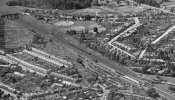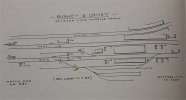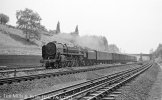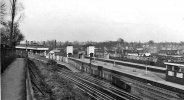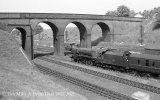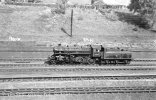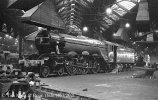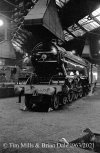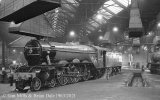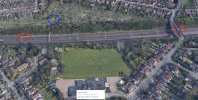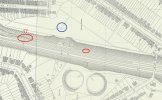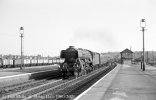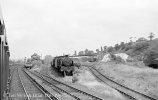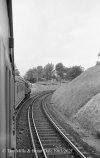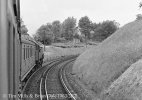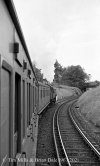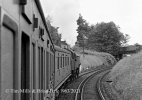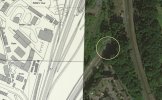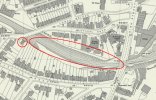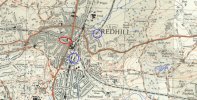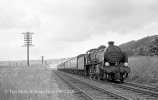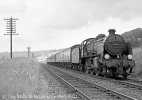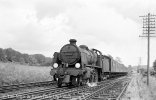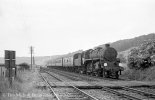Dave - Thank you for that additional info which rather completes the history of the loco. As far as Rail UK is concerned I've been having difficulty accessing it since it went on the new server. However, as a result of your post I made a search via a different route and have now established how I can get the info again. Bravo mon brave!!
Tim and Yorkie Dave. Thanks for additional info about London turntables, in this case Waterloo. I had no idea there were so many around London and, I suspect, neither did most of us.
For today a brief intermission on the LMR.
June 1963 at Bushey Troughs with Britannia 70044 Earl Haig. At this time it was on Crewe North's allocation but subsequently moved to Crewe South, Newton Heath and finally Stockport Edgeley in May 1966 (BR Database) or June (SLS). It was withdrawn at the end of October 1966 and went to T W Ward, Beighton where it was scrapped by 20th February 1967 (BR Database and Rail UK).
View attachment 162229
Also at Bushey Troughs on the slow up line in June 1963 is Fairburn 2-6-4T 42096. By the direction the crew is facing it could be shunting, or perhaps more likely a view is being taken along the length of the train. 42096 had been a Watford engine since leaving the Southern Region at the end of 1959, moving to Wllesden and then Lostock Hall in June (BR Database) or July 1965 (SLS). It was withdrawn just before Christmas 1966 (BR Database and SLS) and went to Cashmore's at Great Bridge where it was scrapped during May 1967 (BR Database and Rail UK).
View attachment 162230
Finally for today and still at Bushey Troughs and facing the opposite direction to the first two photos in June 1963 and featuring the water tower. I've spent many happy hours on that bridge watching the spectacle of the expresses dispensing water in every possible direction. This is an unidentified 8F 2-8-0 - I could take a guess at the number but that would need an element of belief! The very mixed train is of interest though - if only we had a better view of it. I assume it has a fitted head, it's on the fast up line although doesn't appear to have the scoop down and here again the crew man appears to be looking backwards - or maybe the scoop is down and he's looking for overflow from the tender.
View attachment 162231
Brian

